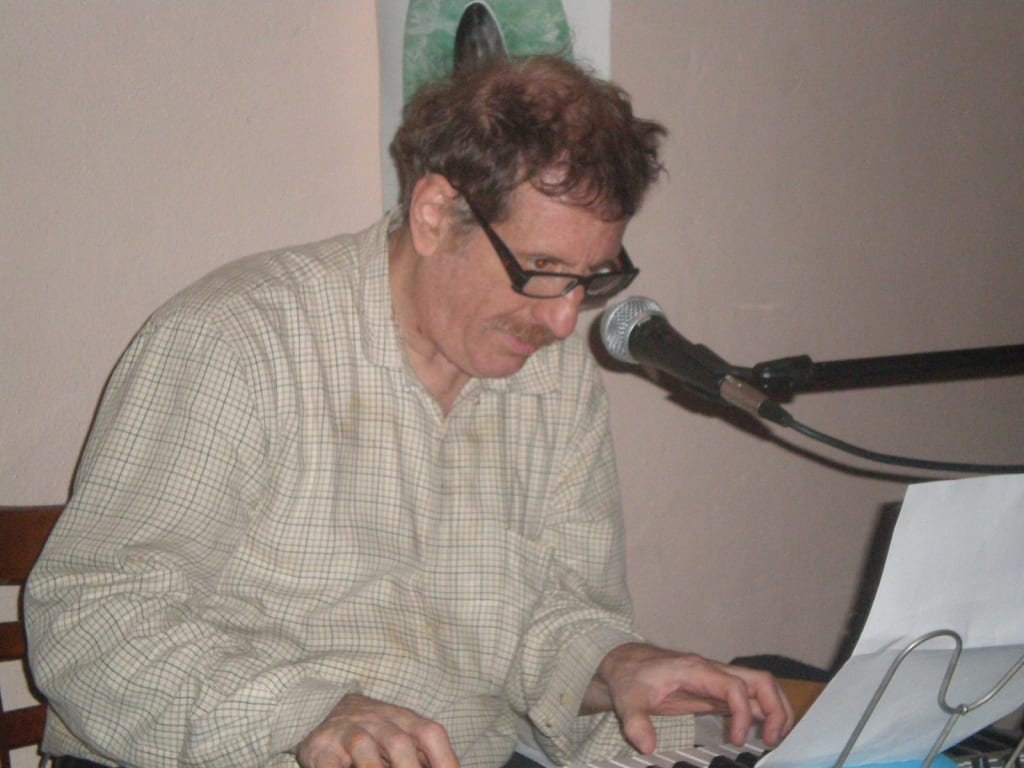A Summer at the National Guitar Workshop
Music from Morning Until Night

By Raanan Geberer,
As a young adult in my late 20s and 30s, I rarely went on vacations. Maybe this was a reaction to the way I had to move around earlier—I went to college in upstate New York, then graduate school in Boston, then had a job in San Francisco that didn’t work out, and finally another job in Indianapolis before returning home to New York City. I just wanted to relax.
But sometime during the spring of 1989, a small ad in the Village Voice; a now-defunct NYC alternative newspaper; caught my eye. It was for the National Guitar Summer Workshop, a combination camp and school on the grounds of a fancy private school in Connecticut that was out for the summer. I didn’t play guitar, but the school program also taught piano and bass, both of which I played. The Workshop focused on rock, jazz, and country, and accepted both teens and adults. I loved music, and I hadn’t played with other people for years. I was sold!
When the time came, I took two weeks off from my job as an editor on a trade magazine and, with my electric bass in its case under my arm, took the bus up to the Canterbury School, checked in and chose my classes: songwriting, bass workshop, keyboard workshop, music theory and doing guitar “tune-ups.” The program worked you hard—you only got two hours off during the day, one for lunch in the cafeteria, the other for swimming, volleyball, or just resting—but I didn’t mind. I was already in love with the place. There were also two artists in residents—this year, they were Tal Farlow, a jazz guitarist from the 1950s, and Leo Kottke, an acoustic folk guitarist who’d been important in the 60s and 70s traditional music scene.
To open the two week session, we had an assembly in the school’s auditorium. Looking around at the people in the audience, I noticed that teens outnumbered adults about four to one, and men outnumbered woman about five to one. I sat next to two guys from Kentucky in their fifties or sixties who’d come here to study bluegrass with one of the teachers, who they knew from back home. Before Sy Cohen, the president of the workshop, addressed the crowd, one of the teachers from the Canterbury School itself went onstage and tried to entertain the crowd with some lame jokes about Steve Garvey and the Red Sox.
Then Sy, a thin, bearded guy in his forties or fifties, addressed the crowd. “This is the National Summer Guitar Workshop,” he said, “and we want you all to have a good time. But we have some rules here, and there are no second chances. We don’t allow alcohol in the rooms or any drugs here. Once we find you with either one, we send you home immediately.” He picked up his guitar and started singing, “No drugs, no booze, but have a good time! No drugs, no booze, but have a good time…” The two older guys from Kentucky nodded immediately, admiring the fact that the Workshop was “a well-run place that didn’t tolerate any nonsense.” After the talk, I went with them, a few teachers and a few older students to a bar in town—for those who’d reached the legal drinking age, there was no rule against social drinking off campus.
Classes started the next day. The teachers were all young guys and were all great—my bass teacher was a funk-R&B bass player who’d made several self-produced records. My keyboard teacher was a music therapist in his “day job,” something I wished I could have become if I were a better musician. He sometimes played solo in a small club in Hartford. I raised my hand and voiced an opinion. “Isn’t solo piano a little limited?” I asked. “I mean, that’s why they have piano trios with bass and drums, isn’t it?”
The teacher smiled. “You mean solo piano like this?” He commenced playing a complex, dazzling Art Tatum-style solo that put me to shame.
As is true everywhere, there were several “characters” at the workshop. Francine, a folkie who was in my songwriting class, was a tireless self-promoter. On the first day, she gave everyone a press release and a cassette of her material. She specialized in comic songs about the passing scene, little everyday problems and relationships—sort of like Christine Lavin, but not as successful. She also kept asking the faculty members to back her up in the final assembly, and her tactics worked—when she came onstage, she had three of the teachers behind her on upright bass, soft bongo drums, and lead guitar. A few years later, my wife and I went to see her at a coffeehouse in the city. With only her voice and acoustic guitar, her songs seemed less interesting.
Then there was Zoltan, a 15-year-old Hungarian immigrant kid, in my bass class. Not only could he not play, he was tone-deaf—he couldn’t tell the difference between one note and another. When the teacher started to explain the basic differences between playing bass and playing guitar, Zoltan raised his hand. “I think people who play guitar are dorks and nerds!” he said. Another time, the teacher told us that it was essential that we changed strings, we wound them properly through the tuning knobs at the top – otherwise they’d be protruding unevenly in every direction. “No,” Zoltan protested, “I like them like that!” Still, everyone admired him for making an effort, and cheered when he sometimes hit the right notes.
As part of the program, the workshop put everyone into groups that would play at the final assembly. Since I was a bass player, they put me into both a jazz group and a country-rock group that played stuff like Credence, the Byrds, and the New Riders—bass players were in short supply. We rehearsed every night after dinner. One night, I had one of my periodic asthma attacks and started wheezing. My regular inhaler didn’t help me enough, and I had to be driven to the nearest emergency room. After a few hours, I was in good enough shape to go back to the dorm. The next day, Sy was pleasantly surprised to see me in class. “We figured you’d have to go home,” he said. “You really have heart!”
As the two weeks progressed, there were two special assembly programs with each of the artists in residence, in which they played a little and then were interviewed by members of the faculty. Tal Farlow, in particular, was an interesting guy—he’s been a sign painter before he became a professional musician, he returned to sign painting periodically when gigs were slow, and he still had a business card saying “Tal Farlow, sign painter.” He recounted how, when he was young, he made his own electric guitar because he couldn’t afford to buy one.
There was some good-natured rivalry between the younger and older “campers” at the Workshop, as evidenced by this poem I saw on the bathroom wall. I don’t remember the whole thing, but it went “There was an old fart at the Workshop/ who could only play bebop/………….(don’t recall the middle lines)/ so he played Smoke on the Water on his archtop!” An archtop, for those who don’t know, is a type of hollow-body electric guitar used almost exclusively by jazz, blues, and rockabilly players.
At the final assembly, I went up to the stage twice—once to play with the jazz group, the other time with the country-rock group. I had no problems playing with the jazz group, but momentarily forgot my bass part when the country-rock group started playing. The faculty advisor, sensing this, said, “Come on, Ron, you can do it!” My fingers started moving automatically, somehow remembering what my mind couldn’t, and we finished the song to great applause.
I returned to the Workshop the next year, and had a great time once again. My only regret is that, for some reason, I didn’t bring my camera with me. About 10 years later, I joined a jam session in Manhattan that had the same kind of energy, Off Wall Street Jam. They, too, also tried to get amateur musicians into bands, which then performed at a nearby bar, the Orange Bear. Tragically, their founder died after a car accident, but that’s another story entirely.






Comments
There are no comments for this story
Be the first to respond and start the conversation.